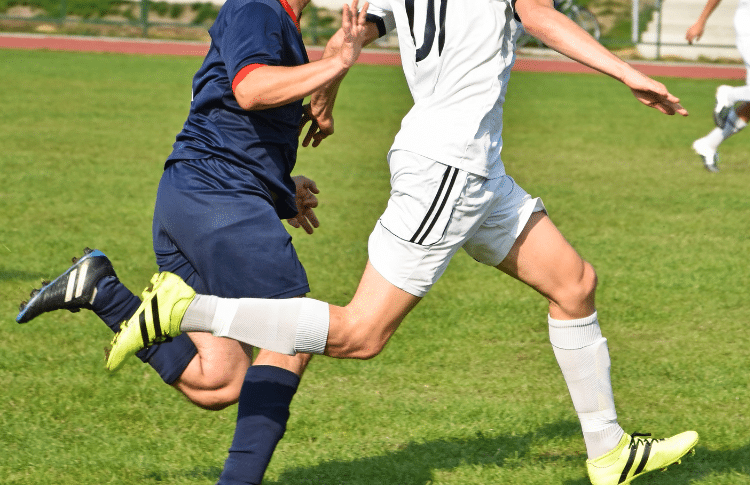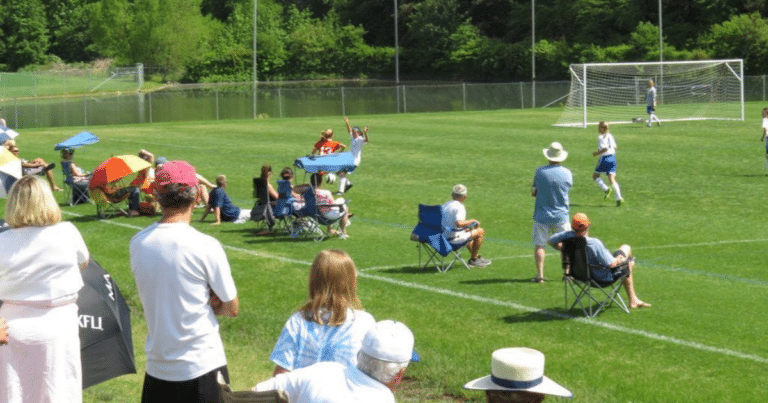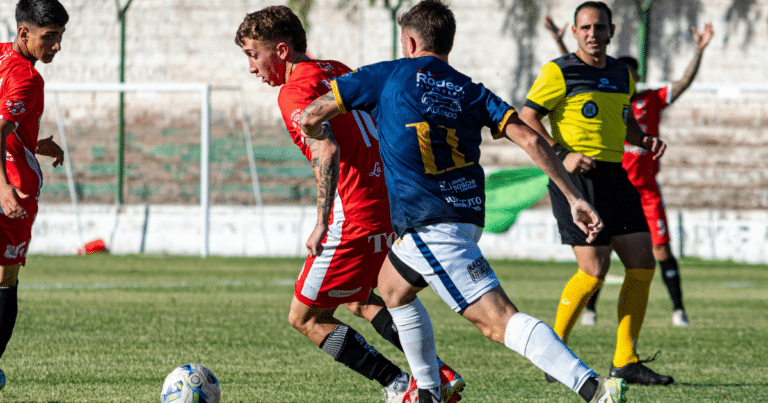What is an Obstruction Rule in Soccer?

The obstruction rule in soccer refers to the act of impeding the progress of an opponent when the ball is not within playing distance of either player.
This can involve stepping into the path of a player to block them, slow them down, or force them to change direction.
The obstruction rule is an important part of soccer, as it helps to ensure fair play and prevent players from gaining an unfair advantage.

It’s important to note that obstruction is only considered a foul when the ball is not within playing distance of either player. If the ball is nearby, blocking or slowing down your opponent is okay and the play will go on.
Let me break it down more and provide examples of the soccer obstruction rule.
Understanding the Obstruction Rule in Soccer
Definition
The obstruction rule in soccer is an offense where a player intentionally blocks or impedes the progress of an opponent without any contact being made between the two players. Importantly, it is only considered obstruction when the ball is nowhere near either player involved.
If the ball was nearby, blocking or slowing down your opponent would be deemed acceptable.
Application
To understand the application of the obstruction rule, it is important to know what is considered a foul. Impending a player to reach the ball when the ball is not within a playing distance is a foul.
Moreover, the obstruction rule was replaced by the “impending progress rule” in 1997. Technically, there is no obstruction rule, although we keep calling it that 😉
When a player obstructs an opponent, the referee will award a free kick to the opposing team. The free-kick will be taken from the spot where the obstruction occurred. If the obstruction is committed inside the penalty area, a penalty kick will be awarded to the opposing team.
It is important to note that obstruction can also occur during a throw-in, corner kick, or goal kick. In such cases, the opposing team will be awarded a free kick.
Penalties
If the obstruction is deemed to be particularly severe or unsporting, the referee may choose to issue a yellow or red card to the offending player. A yellow card is shown for unsporting behavior, while a red card is shown for serious foul play or violent conduct. This is rare in games but it does happen!
Is Shielding Considered Obstruction?
When a player has the ball, they can use their body to shield it from an opposing player. This is known as “shielding” and is a common tactic in soccer. However, is shielding considered obstruction?
According to the soccer rules, shielding is not considered obstruction as long as the player with the ball is within playing distance of it. Playing distance refers to the distance that a player can reach the ball while still maintaining balance and control. If the player with the ball is not within playing distance, then shielding can be considered obstruction.
It’s important to note that shielding does not give the player with the ball the right to push or hold the opposing player. If the player with the ball uses their body to impede the progress of the opposing player, then it can be considered a foul.
Controversies and Debates Around Obstruction Rule
While the obstruction rule in soccer is generally well-understood and accepted, there are still some controversies and debates surrounding it. Here are a few of the most common points of contention:
Contact vs. No Contact
One of the main debates around the obstruction rule is whether or not contact needs to be made in order for obstruction to occur. Some argue that even if there is no contact, intentionally blocking an opponent’s path can still be seen as a form of obstruction. I agree with this but it becomes a big gray area so many refs do not enforce it.
Intent
Another area of debate is the question of intent. It can be difficult to determine whether a player is intentionally obstructing an opponent or simply trying to get in their way. Referees must use their judgment to determine whether a foul has been committed, and this can sometimes lead to disagreements and controversy.
Final Thoughts
The obstruction rule is in place to ensure fair play and protect players from dangerous tackles and collisions. By impeding the progress of an opponent, a player can be penalized with an indirect free-kick.
To avoid committing an obstruction, players should focus on maintaining a safe distance from their opponents while still being able to make a play on the ball. They should not take ‘off-ball cheap shots’ at any point of the game.
Shielding the ball is permitted, but players should not block their opponents’ path or force them to change direction when the ball is not within playing distance.
Ultimately, understanding the obstruction rule and its nuances can help players and teams avoid unnecessary penalties and maintain a fair and safe playing environment.

Written By: SoccerNovo
SoccerNovo is an independent youth soccer media brand built to help parents, players, and coaches better understand the game and the pathways available in U.S. soccer. Our mission is to make youth soccer simpler, clearer, and more accessible for everyone involved in it.
Let’s connect






